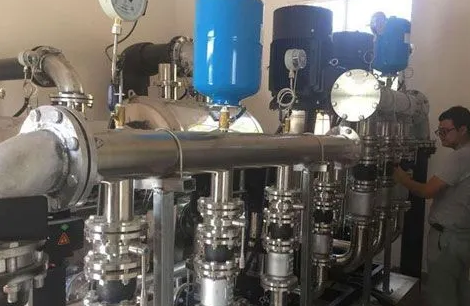Energy-saving and consumption-reducing technology for multistage pumps
The energy-saving and consumption-reducing technology of multi-stage pumps in the industrial field is of great significance for improving energy efficiency and reducing operating costs. The following will introduce in detail the energy-saving and consumption-reducing technology of multi-stage pumps:
1. High-efficiency pump type and motor selection
High-efficiency pump type: Choose a high-efficiency and energy-saving multi-stage pump. The design of this type of pump optimizes the flow channel and impeller structure, reduces hydraulic loss, and improves pump efficiency. At the same time, appropriate pump models and specifications should be selected based on actual needs to avoid the "big horse and small cart" phenomenon, that is, the rated flow and head of the pump are much greater than the actual demand, resulting in a waste of energy.
High-efficiency motor: Use a high-efficiency motor as the driving source of the multi-stage pump, such as a second-level energy-efficiency motor or a first-level energy-efficiency motor. These motors have higher conversion efficiency and lower energy consumption, which can significantly reduce the electrical energy consumption during the operation of multi-stage pumps.
2. Frequency conversion speed regulation technology
Frequency conversion speed regulation technology is one of the important means to achieve energy saving and consumption reduction of multi-stage pumps. By installing a frequency converter, the operating speed of the pump can be automatically adjusted according to the actual needs of the system, so that the pump always works near the optimal efficiency point. This not only reduces energy consumption but also extends the life of the pump.
3. Optimize piping system design
The resistance of the piping system has a significant impact on the energy consumption of multi-stage pumps. Therefore, optimizing pipeline design is one of the important measures to save energy and reduce consumption. Specifically include:
Reduce the length of the pipeline and the number of elbows to reduce the resistance of the fluid in the pipeline.
Choose appropriate pipe diameter and smooth inner wall material to reduce fluid friction and turbulence.
Regularly clean and maintain piping systems to ensure smooth flow and reduce energy consumption.

4. Improve the internal structure of the pump
By improving the internal structure of the multi-stage pump, such as optimizing the design of the impeller and pump casing, improving the sealing performance, etc., the hydraulic loss and leakage loss of the pump can be reduced, and the efficiency of the pump can be improved.
5. Properly configure the operation mode of multi-stage pumps
According to actual needs, the series and parallel operation modes of multi-stage pumps should be reasonably arranged. When flow demand is low, you can run just one pump or at a lower speed; when flow demand is high, start more pumps or run the pumps faster. This can achieve the best energy efficiency ratio and reduce unnecessary energy consumption.
6. Regular maintenance and inspection
Regular maintenance and inspection of multi-stage pumps is key to keeping them operating efficiently. This includes inspecting and replacing worn parts, cleaning the inside of the pump, ensuring pump and motor alignment, etc. These measures can ensure that the multi-stage pump always maintains good working condition and high efficiency.




